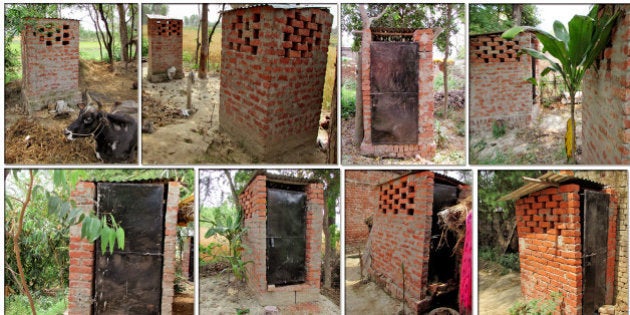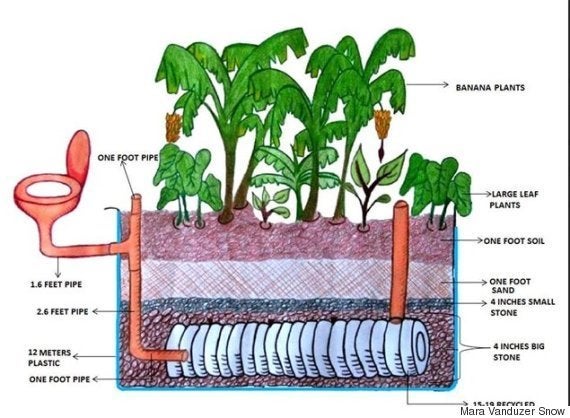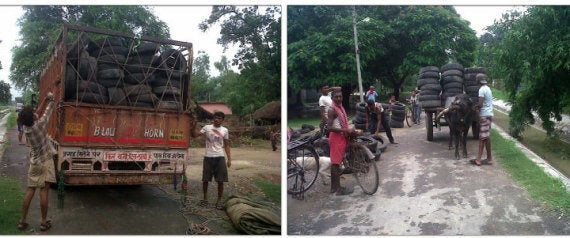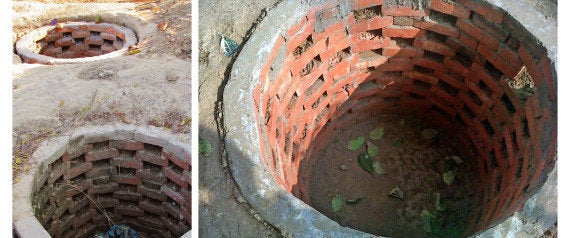
India’s sanitation mission, Swacch Bharat, which aims to eliminate open defecation by Mahatma Gandhi's 150th anniversary in October 2019, needs all the help it can get. Only 36 percent of Indians have access to sanitation facilities, according to the latest World Bank data.
There is a growing concern about how open defecation has adverse economic impacts associated with disease, loss of education, productivity, time and tourism. A 2011 report from the Water and Sanitation Program revealed that inadequate sanitation costs India Rs 2.4 trillion (US $53.8 billion), the equivalent of 6.4 percent of India’s GDP in 2006.
American-born student Marta Vanduzer-Snow, a Rutgers University scholar, has been conducting hands-on experiments to test her economic theory on development, which focuses on healthcare, education, and infrastructure. In the villages of Raebareli and Amethi in Uttar Pradesh, she has worked with Rajiv Gandhi Mahila Vikas Pariyojana in building over 82 low-cost toilets and 27 solar power plants on her own personal resources. We reached out to her to learn more about the social and engineering challenges she met with during her journey.
The toilet, she said, has a single tank, which, is five feet tall, two feet wide and nine feet long.

This is how it works: First the tank is lined with a nonporous material and then filled with layers such as broken brick, small stones, sand etc. Together these layers, through the processes of evaporation and transpiraion, filter the waste matter so that 70 percent becomes methane gas exiting out the back pipe and 30 percent slowly rises to the top as compost. Even the large leaves of the tall plants are a layer and the food is edible so long as nothing is growing close to the ground.

“The toilet model came from someone working in the Brazilian government. The important lesson is to have the humility to be open to new models from any source.” said Marta, in a phone interview with HuffPost India. Her toilet costs only Rs. 9109, which she argues is not just cheaper, but superior to the government's design.

Snow sent us photos showing how the government-run toilet pits are constructed. "If you look at their tank, it’s made out of bricks which are spaced far apart, so the urine and fecal matter is entering the soil - so there’s less health function to these toilets. And their toilet costs three thousand rupees more," she said.
“Every single government toilet that I have been to, I’ve not seen a single one being used. I have pictures of shit in my toilet, and I have never been so happy to see shit in the toilet, since they are being used. Women and children definitely appreciate it and some of the men do, too“ she said.
She credited her program co-ordinator Pawan Singh for providing help on the ground, and recruiting local stakeholders to work on the toilets, and doing physical labour alongside everyone else. “I am so proud of the how there is no ‘labour maalik mistry’ divide on our work site.”
Consultation is key. Before she started building the toilets, Snow showed all the different designs to the villagers, who elected not to have the dry-composting ones as it would be smelly.
Snow strongly believes in focusing on substance over branding. She consulted with engineers and groups working in New Delhi on how to fix the toilet model, and improvised the design, switching to using broken bricks in her toilet design to save on costs.
She also recommends this TED talk for interesting pointers on how to solve the sanitation problem.



Contact HuffPost India